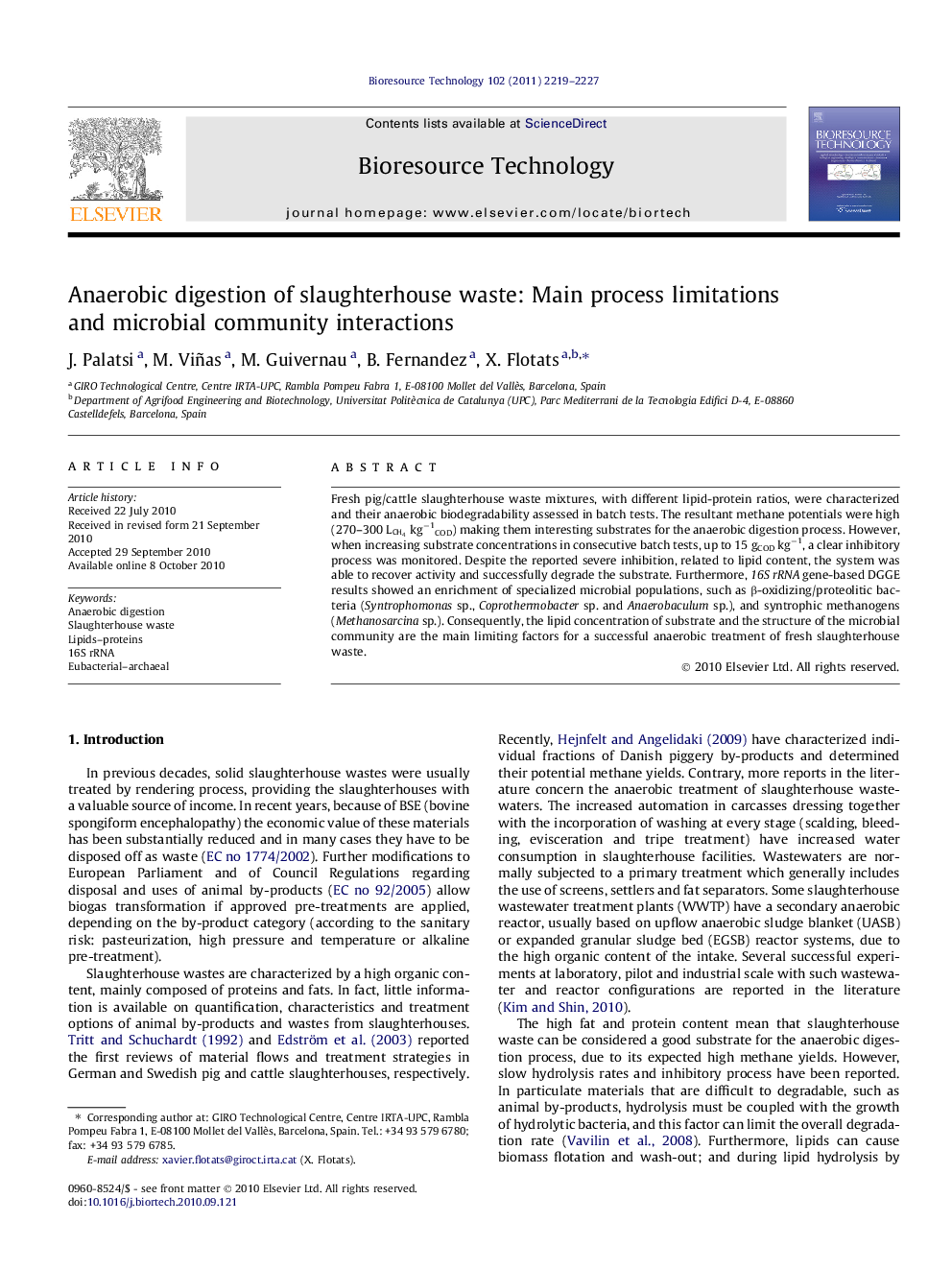| Article ID | Journal | Published Year | Pages | File Type |
|---|---|---|---|---|
| 10395315 | Bioresource Technology | 2011 | 9 Pages |
Abstract
Fresh pig/cattle slaughterhouse waste mixtures, with different lipid-protein ratios, were characterized and their anaerobic biodegradability assessed in batch tests. The resultant methane potentials were high (270-300 LCH4 kgâ1COD) making them interesting substrates for the anaerobic digestion process. However, when increasing substrate concentrations in consecutive batch tests, up to 15 gCOD kgâ1, a clear inhibitory process was monitored. Despite the reported severe inhibition, related to lipid content, the system was able to recover activity and successfully degrade the substrate. Furthermore, 16SrRNA gene-based DGGE results showed an enrichment of specialized microbial populations, such as β-oxidizing/proteolitic bacteria (Syntrophomonas sp., Coprothermobacter sp. and Anaerobaculum sp.), and syntrophic methanogens (Methanosarcina sp.). Consequently, the lipid concentration of substrate and the structure of the microbial community are the main limiting factors for a successful anaerobic treatment of fresh slaughterhouse waste.
Related Topics
Physical Sciences and Engineering
Chemical Engineering
Process Chemistry and Technology
Authors
J. Palatsi, M. Viñas, M. Guivernau, B. Fernandez, X. Flotats,
